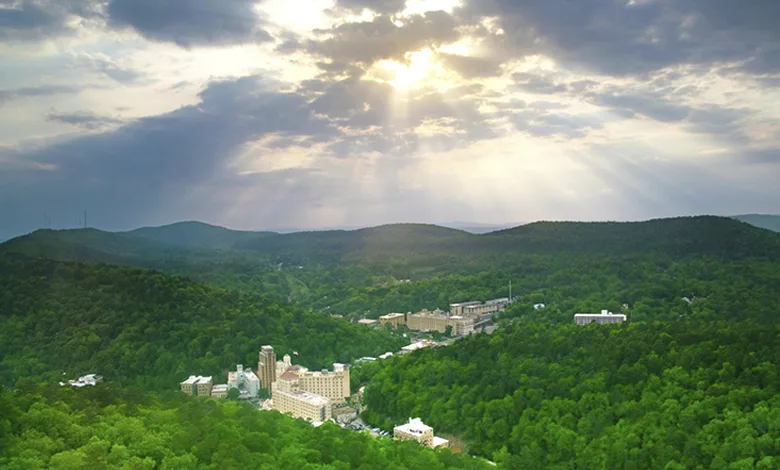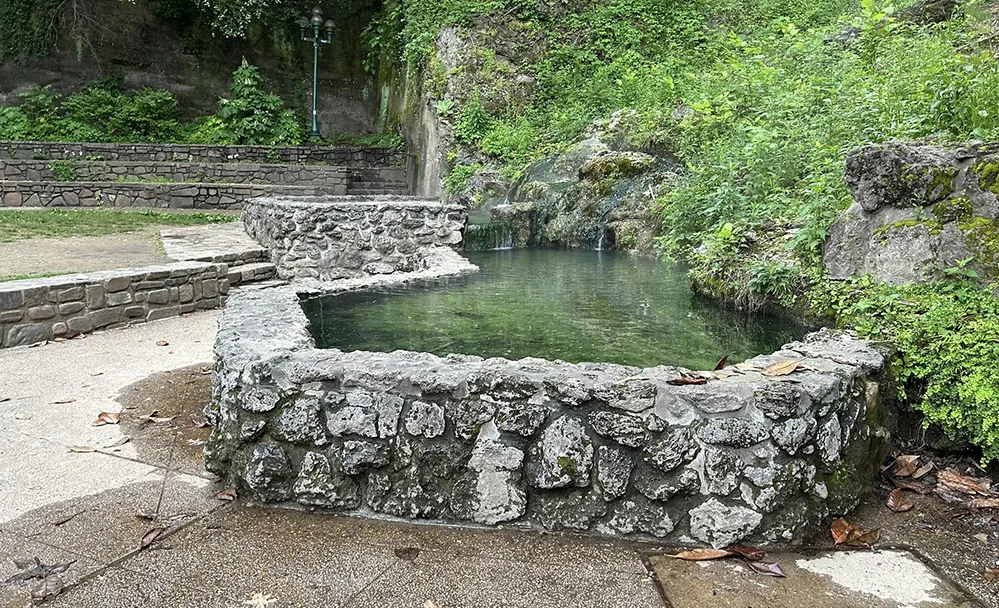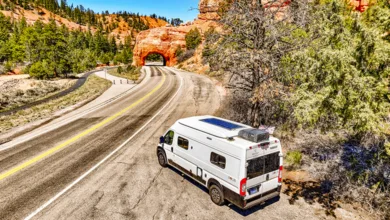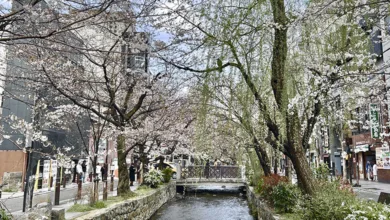Take a Hike! Explore the Healing Waters and Trails of Hot Springs National Park
History, hiking, and hot springs — Arkansas’s most surprising retreat

Strolling along the footpath on the east side of Central Avenue in downtown Hot Springs, Arkansas, it’s easy to forget you’re in a national park. Cross the street, and you’ve officially stepped out of Hot Springs National Park and into the city of Hot Springs, which is surrounded by more than 5,500 acres of the park established by Congress in 1921.

The Legacy of Bathhouse Row
By that same decade, a series of public baths emerged on the Avenue, where tourists flocked for the supposedly therapeutic waters provided by the region’s abundant mineral-rich thermal springs. Eight historic bathhouses still stand, showcasing their original architectural splendor, but only two – the Quapaw and the Buckstaff – continue to offer bathing experiences for visitors. Others have been repurposed and now serve as a brewery, a hotel, or facilities for National Park resources. The 1915 Fordyce Bathhouse is currently the National Park Visitor Center.
Bathhouse Row and the half-mile walkway behind it, known as the Grand Promenade, were designated as a National Historic Landmark District in 1987. If you’re setting out on foot to explore some of the 26 miles of paths within the park trail system, walking along these historic routes provides a gentle introduction to this unusual U.S. National Park.
Architectural splendor on Central Avenue
We began our walk heading north along Central Avenue, passing by the bathhouses. Each displayed its own distinctive design, showcasing popular architectural styles from the late 19th and early 20th centuries in the U.S., including Spanish Colonial Revival, Neoclassical, and Renaissance Revival.

Water meets history
The Grand Promenade can be accessed from either the north or south entrance. Near the northern entrance, where Central Avenue meets Fountain Street, a spring feeds two connected decorative ponds—a popular tourist photo spot. Armed with my trusty thermometer (which any respectable traveling scientist carries), I measured the water temperature at 125 degrees Fahrenheit (52 degrees Celsius)—just a bit too toasty for more than a brief finger dip.
Behind the pond, steps lead to the elegantly paved Grand Promenade brick walkway that took over 20 years to complete. Surrounded by vegetation and the occasional steaming hot spring spilling over rocks, the hustle and bustle of the Downtown area peeks through the lush trees but is barely noticeable along the path as it leads to the south entrance and the site of the historic Noble Fountain on Reserve Street.
The Noble Fountain’s winding journey
The elegantly designed drinking fountain is named after John W. Noble, the U.S. Secretary of the Interior from 1889 to 1893, who secured funds for improvements to Hot Springs Reservation (as it was known before becoming a National Park). The fountain has been relocated several times over the years. It once stood outside the park’s nearby yellow Administration building, which features the familiar brown National Park logo on its street corner sign.
Take in the view from the tower
While there are many other short trails to explore in the park’s mountainous areas, consider driving up to Hot Springs Mountain Tower. The 216-foot structure rises 1,256 feet above sea level and offers an excellent 360-degree view, including downtown Hot Springs and the surrounding Ouachita Mountain range.
Biscuits and memories
With a telephoto lens from the tower’s summit, I was delighted to spot an old sign adorning a distant, weathered building that read, “Uneeda Biscuit.” Although the brand has long been discontinued, I was immediately flooded with childhood memories of the company’s biscuits—large, Saltine-like soda crackers that my mother slathered with peanut butter, which became welcome additions to my school lunches.
Hot Springs National Park offers an excellent weekend getaway and is full of surprises. You only need to look.





